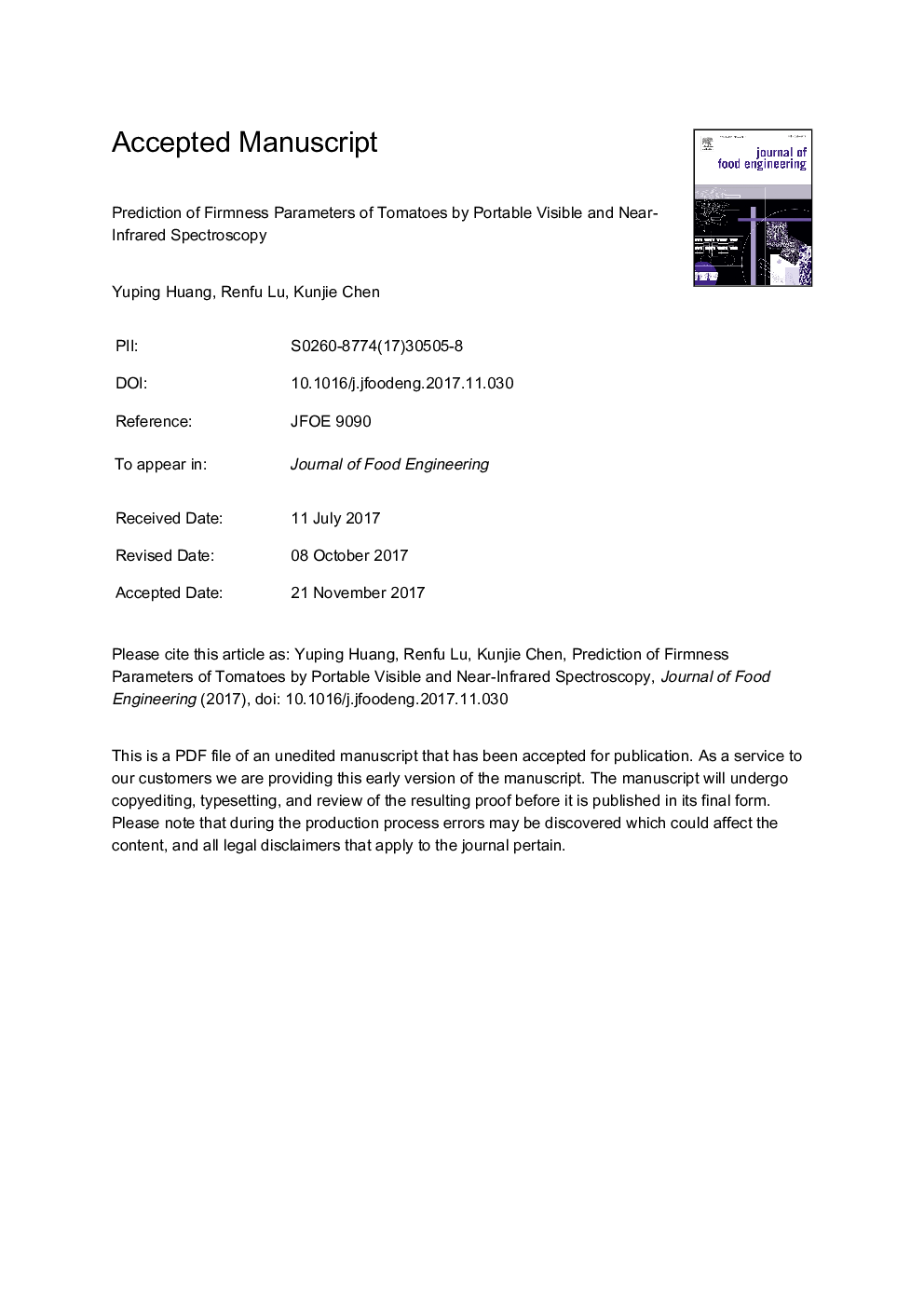| Article ID | Journal | Published Year | Pages | File Type |
|---|---|---|---|---|
| 6664777 | Journal of Food Engineering | 2018 | 35 Pages |
Abstract
Firmness is an important parameter for determining maturity/ripeness and postharvest processing quality of tomatoes. This paper reports on the prediction of different fruit firmness parameters of tomatoes by using visible and near-infrared spectroscopy. Interactance spectra were taken from 600 freshly harvested tomatoes of six maturity stages, using two portable spectrometers which cover the two commonly used spectral regions, i.e., the visible and short-wave near-infrared (Vis/SWNIR) range of 400-1100Â nm and the near-infrared (NIR) range of 900-1700Â nm, respectively. Different firmness parameters for the tomatoes were measured using acoustic, impact, compression and puncture tests. Partial least squares (PLS) regression models, coupled with four preprocessing methods (i.e., original, logarithmic, autoscale, and logarithmic plus autoscale), were developed to predict the firmness parameters of tomato fruit. The PLS models gave better predictions of impact firmness, compression area and puncture slope for the tomato fruit, with the correlation coefficients for prediction of 0.899, 0.917 and 0.935 for Vis/SWNIR, and 0.846, 0.831 and 0.853 for NIR. Overall, autoscale preprocessing performed better for both Vis/SWNIR and NIR spectra. Visible and near-infrared spectroscopy in interactance mode can be useful for nondestructive assessment of tomato firmness measured by both destructive and nondestructive reference methods.
Related Topics
Physical Sciences and Engineering
Chemical Engineering
Chemical Engineering (General)
Authors
Yuping Huang, Renfu Lu, Kunjie Chen,
